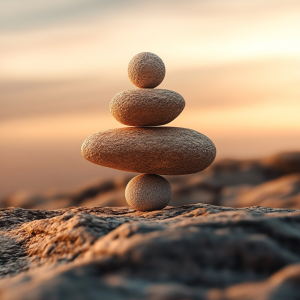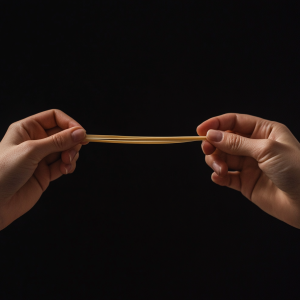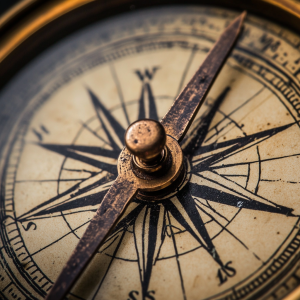
Find balance in your preparedness efforts.
Overcoming Preparedness Fatigue: Finding Balance in the Prepper Lifestyle
In the world of preparedness, there’s an often-overlooked enemy that can derail even the most dedicated prepper: preparedness fatigue. This insidious condition creeps up on those who spend countless hours planning for worst-case scenarios, constantly absorbing negative news, and living in a state of high alert. Today, we’re going to explore this challenge and discuss how to maintain a healthier, more sustainable approach to preparedness.
The Toll of Being Wound Too Tight
Imagine a rubber band stretched to its limit. That’s what happens to our minds when we’re constantly focused on potential disasters and emergency scenarios. This state of perpetual stress can lead to:
- Anxiety and depression
- Decreased cognitive function
- Weakened immune system
- Disrupted sleep patterns
- Strained relationships
Just as a rubber band loses its elasticity when overstretched, our minds lose their resilience and ability to respond effectively to real emergencies when we’re always on high alert.

Your mind can’t handle being stretched to its limit all the time.
Shifting the Paradigm: From Doomsday to Self-Sufficiency
To combat preparedness fatigue, we need to shift our mindset from preparing for the end of the world to building a more self-sufficient lifestyle. Here are some ways to make this transition:
- Focus on skills, not just supplies: Learn gardening, basic mechanics, or first aid. These skills are valuable in everyday life, not just emergencies and the actual performing of the skills will be a welcome boon to your mind.
- Build community: Connect with like-minded individuals who share your interest in self-sufficiency. This creates a support network and makes preparedness a social activity. Spread the attitude of peaceful preparedness while you’re at it.
- Practice mindfulness: Incorporate meditation, yoga, prayer and focus on your Spiritual Preparedness in order to help manage stress and maintain perspective.
- Limit news consumption: Stay informed, but set boundaries on how much negative news you consume daily. Put that negative news in its proper perspective. Stop your mind from making knee jerk reactions to the news.

#PeacefulPreparedness
The Art of Peaceful Preparation
Peaceful preparation is about finding joy in the journey of becoming more self-reliant. It’s about creating a lifestyle that’s fulfilling and sustainable, regardless of what the future holds. Here are some ways to embrace peaceful preparation:
- Celebrate small wins: Acknowledge your progress, whether it’s growing your first tomato or learning a new skill.
- Find the beauty in simplicity: Appreciate the satisfaction of making things from scratch or reducing your dependence on modern conveniences.
- Share your knowledge: Teach others about self-sufficiency in a positive, non-alarmist way. This can be incredibly rewarding and help build a resilient community.
- Balance preparation with enjoyment: Make time for hobbies, relaxation, and social activities. A well-rounded life is itself a form of preparation.
- Practice gratitude: Regularly reflect on the good things in your life. This helps counteract the negativity bias that can come with constant disaster planning. It’s a way to strengthen your Spiritual Preparedness which is the #1 Principle of Preparedness for a reason.
Inspiring Others: The Ripple Effect of Balanced Preparedness
When we approach preparedness from a place of peace and positivity, we’re more likely to inspire others to join us. People are naturally drawn to those who exude calm confidence and practical knowledge. By focusing on self-sufficiency and community resilience rather than doomsday scenarios, we create a more inviting and sustainable preparedness culture.
A New Perspective: Preparedness as a Journey, Not a Destination

Preparedness is a journey, not a destination
As we conclude, let’s reimagine preparedness not as a frantic race against time, but as a journey of personal and community growth. Here’s a fresh way to look at your prepping efforts:
- Embrace the present: While it’s wise to plan for the future, don’t let it overshadow the beauty of today. Your preparedness skills can enhance your current life, not just a hypothetical future one.
- Seek wonder, not worry: Let your pursuit of knowledge fuel curiosity rather than anxiety. There’s marvel in learning how things work, from food preservation, to first aid, to energy systems.
- Create, don’t just consume: Shift from acquiring supplies to creating solutions. Whether it’s designing a rainwater collection system or crafting homemade household products, let your prepper mindset spark innovation.
- Cultivate resilience through relationships: True preparedness isn’t just about individual survival, but about building a network of support. Invest in your community as much as your stockpile.
- Find your prepper philosophy: Develop a personal ethos that guides your preparedness journey. This is your compass that I refer to in your Spiritual Preparedness efforts. Maybe it’s “sustainable readiness” or “mindful self-reliance”. Let this be your north star when fatigue sets in.

Define your true north and live by it everyday
Remember, the most valuable prep is a balanced, resilient mind. (Principle #2, Mental Preparedness) By reframing preparedness as a positive force in your life rather than a response to fear, you not only combat fatigue but also cultivate a lifestyle that’s fulfilling in any circumstance.
So, as you continue on your preparedness journey, ask yourself: How can my efforts today create a better life for myself and others, regardless of what tomorrow brings? In answering this question, you may find not just readiness, but also purpose, connection, and peace of mind.


